Program
The Check-in will open at 07:45. Please show the QR Code you received with the registration to pick-up your badge.
We recommend to travel by public transportation. Tram 6, 9 or 10 to ETH/Universitätsspital
Entrance: ETH Zurich, ML Building, Tannenstrasse/Clausiusstrasse 3, 8006 Zurich
How to get there, view general information.
RobotX Exhibition Hall (12:30 to 18:30)
Meet the exhibitors, experience live demos! (list will be ongoing and updated)
RSL Transformer Robot:
Wheels, Legs and Arms. The transformer robot can do it all: quadrupedal locomotion, bipedal locomotion, and dual-arm manipulation.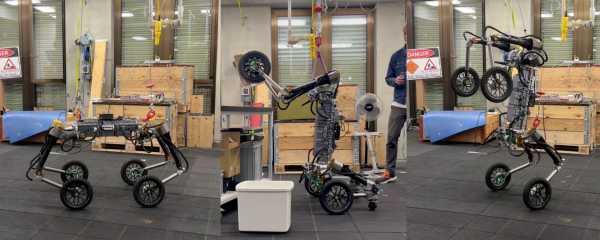 Duatic AG builds human-scale robots that transform intralogistics operations. These robots navigate and handle objects like humans, ensuring rapid deployment and minimal upfront investment, seamlessly integrating into existing infrastructure. Powered by evolutionary actuators and cutting-edge robotic arm architecture, Duatic delivers unparalleled efficiency and reliability at affordable cost.
Duatic AG builds human-scale robots that transform intralogistics operations. These robots navigate and handle objects like humans, ensuring rapid deployment and minimal upfront investment, seamlessly integrating into existing infrastructure. Powered by evolutionary actuators and cutting-edge robotic arm architecture, Duatic delivers unparalleled efficiency and reliability at affordable cost.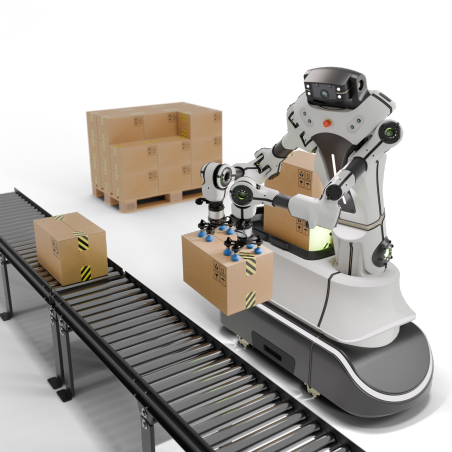 The
robotic revolution to
save disaster victims
and inspect confined spaces!
RoBoa goes where no other robots, drones, or humans can go!
The
robotic revolution to
save disaster victims
and inspect confined spaces!
RoBoa goes where no other robots, drones, or humans can go!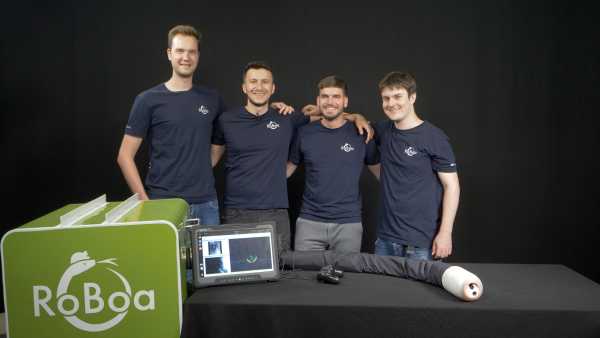 Tethys Robotics is designing a compact, autonomous underwater drone tailored for inspections in turbid and challenging waters. Our innovative solution provides enhanced efficiency and flexibility for the offshore energy sector.
Tethys Robotics is designing a compact, autonomous underwater drone tailored for inspections in turbid and challenging waters. Our innovative solution provides enhanced efficiency and flexibility for the offshore energy sector. The
Autonomous
River
Cleanup focuses on developing a river waste monitoring network and an autonomous robotic sorting system to improve river waste recycling. The project aims to transfer and apply high-tech, such as robotics, automation, and artificial intelligence, to the field of environmental protection. As part of our project, we are developing and testing systems to show how such technologies can be used effectively against river waste.
The
Autonomous
River
Cleanup focuses on developing a river waste monitoring network and an autonomous robotic sorting system to improve river waste recycling. The project aims to transfer and apply high-tech, such as robotics, automation, and artificial intelligence, to the field of environmental protection. As part of our project, we are developing and testing systems to show how such technologies can be used effectively against river waste.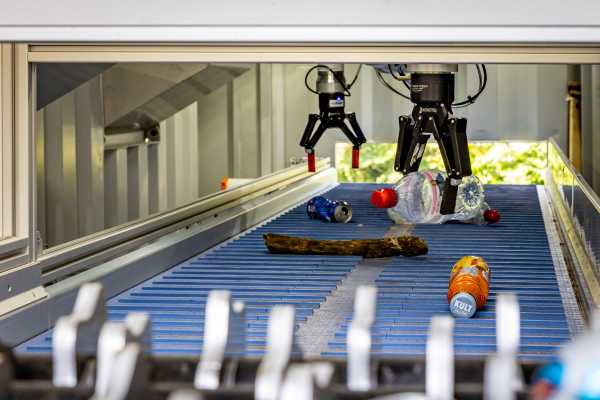 Introducing
Tytan – a cutting-edge quadrupedal robot designed for high-performance tasks. Equipped with state-of-the-art actuators, it achieves speeds of up to 20 km/h and effortlessly carries loads up to 100kg. Ideal for applications demanding strength, agility, and reliability, Tytan is built to push boundaries and handle challenging real-world scenarios.
Introducing
Tytan – a cutting-edge quadrupedal robot designed for high-performance tasks. Equipped with state-of-the-art actuators, it achieves speeds of up to 20 km/h and effortlessly carries loads up to 100kg. Ideal for applications demanding strength, agility, and reliability, Tytan is built to push boundaries and handle challenging real-world scenarios.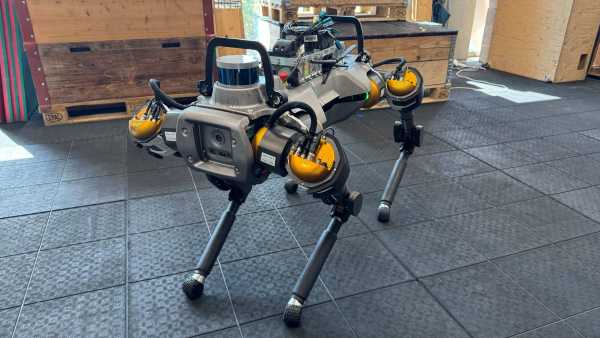 The goal of
Intelligent Control Systems group research is to make high performance control and estimation available for safety-critical systems that act in varying and uncertain environments. At the booth, we present our miniature race car platform that we use to test and validate control and estimation algorithms.
The goal of
Intelligent Control Systems group research is to make high performance control and estimation available for safety-critical systems that act in varying and uncertain environments. At the booth, we present our miniature race car platform that we use to test and validate control and estimation algorithms. 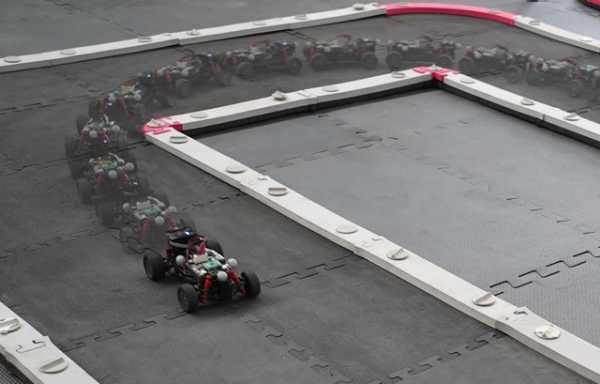 Maxon develops and manufactures high-performance robotic actuators and motion systems for autonomous mobile and industrial robots. We focus on high degrees of integration, scalability, and robust designs. Our deep vertical integration allows us to highly optimize all key subsystems, ranging from simulation models to motor windings and beyond.
Maxon develops and manufactures high-performance robotic actuators and motion systems for autonomous mobile and industrial robots. We focus on high degrees of integration, scalability, and robust designs. Our deep vertical integration allows us to highly optimize all key subsystems, ranging from simulation models to motor windings and beyond. 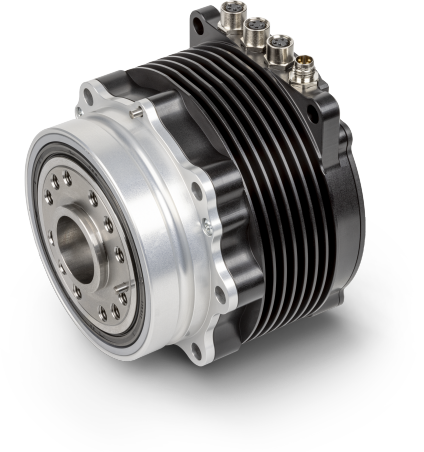 The
Perception and Navigation Team of the Robotic Systems Lab develops sensing systems and algorithms that enable robots to understand their surroundings and navigate autonomously through both unknown and partially known environments. Through this work, they enhance robots' ability to operate independently in complex real-world scenarios.
The
Perception and Navigation Team of the Robotic Systems Lab develops sensing systems and algorithms that enable robots to understand their surroundings and navigate autonomously through both unknown and partially known environments. Through this work, they enhance robots' ability to operate independently in complex real-world scenarios.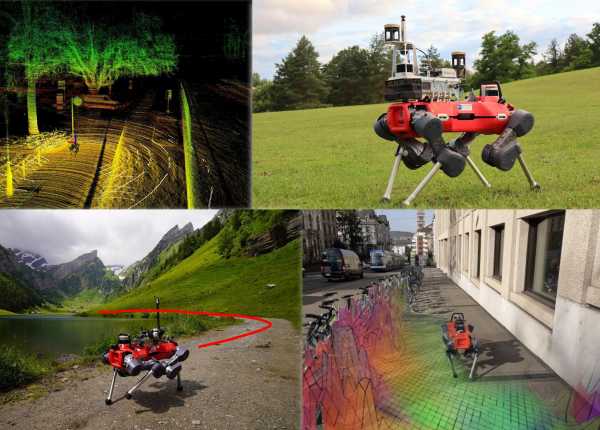 RIVR is a Swiss robotics company pioneering Physical AI and robotic solutions to revolutionize last-mile delivery, giving 1 human the power of 1000. Through the combination of artificial neural networks and innovative robot designs with wheels and legs, RIVR aims to enhance efficiency, sustainability, and scalability in last-mile delivery. Founded as Swiss-Mile, the company rebranded to RIVR in 2025 to better reflect its mission of driving the future of intelligent robotics.
RIVR is a Swiss robotics company pioneering Physical AI and robotic solutions to revolutionize last-mile delivery, giving 1 human the power of 1000. Through the combination of artificial neural networks and innovative robot designs with wheels and legs, RIVR aims to enhance efficiency, sustainability, and scalability in last-mile delivery. Founded as Swiss-Mile, the company rebranded to RIVR in 2025 to better reflect its mission of driving the future of intelligent robotics.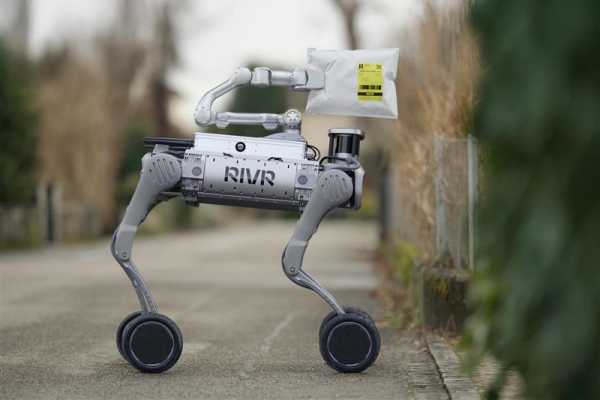 Heavy Machinery @ RSL: Our research group is dedicated to revolutionizing the automation of heavy equipment for construction applications by deploying autonomous systems leveraging advanced AI. Our mission is to enhance the capabilities of construction machinery, enabling it to perform tasks such as landscaping, object manipulation, forestry operations, and earth moving with precision and efficiency in rugged environments.
Heavy Machinery @ RSL: Our research group is dedicated to revolutionizing the automation of heavy equipment for construction applications by deploying autonomous systems leveraging advanced AI. Our mission is to enhance the capabilities of construction machinery, enabling it to perform tasks such as landscaping, object manipulation, forestry operations, and earth moving with precision and efficiency in rugged environments.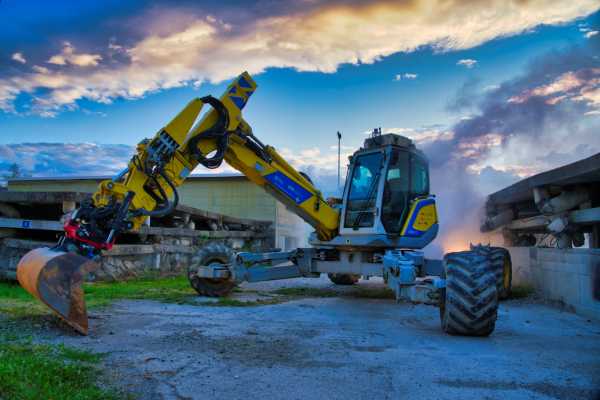 magnecko is a magnetic quadrupedal climbing robot which aims to navigate complex three-dimensional structures to perform inspection tasks.
magnecko is a magnetic quadrupedal climbing robot which aims to navigate complex three-dimensional structures to perform inspection tasks.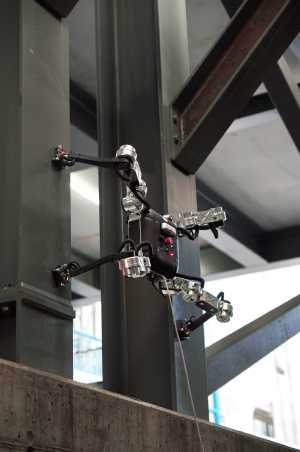 LAYERED provides robotic solutions for automated, high-quality coating directly at construction sites. Our autonomous robots help construction companies tackle labor shortages, reduce material waste, and accelerate the shift towards sustainable construction practices.
LAYERED provides robotic solutions for automated, high-quality coating directly at construction sites. Our autonomous robots help construction companies tackle labor shortages, reduce material waste, and accelerate the shift towards sustainable construction practices.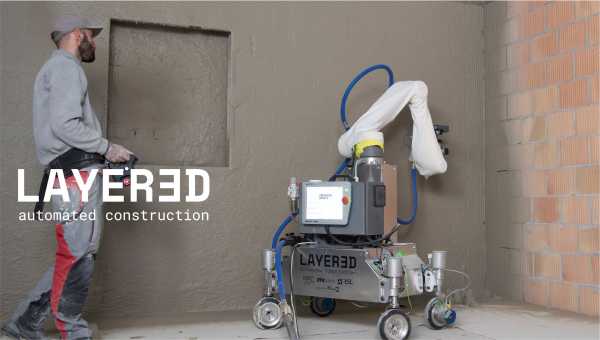 NomadZ: we are a student team from ETH Zürich competing in the RoboCup Standard Platform League, where fully autonomous NAO robots play soccer. Our mission is to develop an advanced software framework to make our robots play competitively.
NomadZ: we are a student team from ETH Zürich competing in the RoboCup Standard Platform League, where fully autonomous NAO robots play soccer. Our mission is to develop an advanced software framework to make our robots play competitively.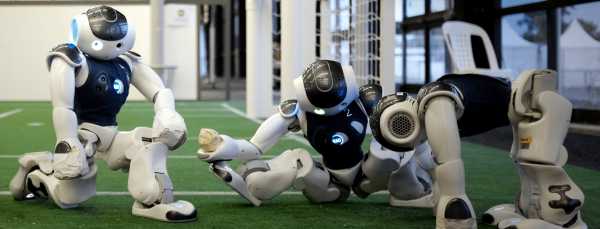 Accurate object throwing poses a challenge for robots due to gripper release uncertainties and the precision demands of robotic control. At RSL, we explored training robots to perform effective whole-body maneuvers using reinforcement learning. In this demo, our
legged manipulator robot,
ALMA, will showcase its ability to throw balls toward a target with its best effort.
Accurate object throwing poses a challenge for robots due to gripper release uncertainties and the precision demands of robotic control. At RSL, we explored training robots to perform effective whole-body maneuvers using reinforcement learning. In this demo, our
legged manipulator robot,
ALMA, will showcase its ability to throw balls toward a target with its best effort.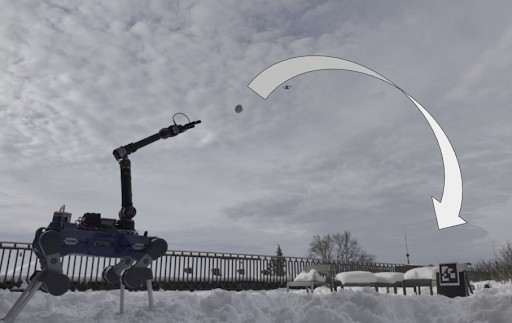 The
Robotics and AI Institute aims to solve the most important and fundamental problems in robotics and AI. Come to our booth to see some of the institute's robots in action.
The
Robotics and AI Institute aims to solve the most important and fundamental problems in robotics and AI. Come to our booth to see some of the institute's robots in action.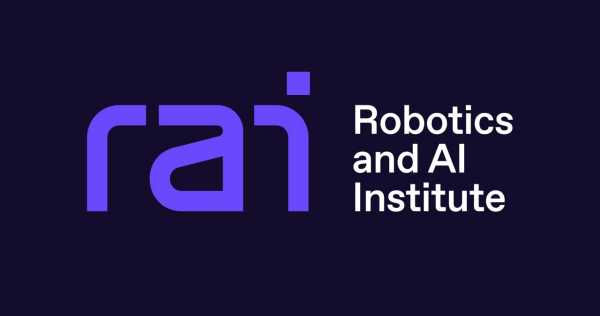 Our project focuses on
3D scene understanding for robotics using
Scene Graphs, enabling a structured and hierarchical perception of the environment. Beyond passive observation, our framework allows robots to interact with objects, refining their understanding through real-world engagement. This approach enhances autonomous decision-making, benefiting applications like robotic assistance, navigation, and industrial automation.
Our project focuses on
3D scene understanding for robotics using
Scene Graphs, enabling a structured and hierarchical perception of the environment. Beyond passive observation, our framework allows robots to interact with objects, refining their understanding through real-world engagement. This approach enhances autonomous decision-making, benefiting applications like robotic assistance, navigation, and industrial automation.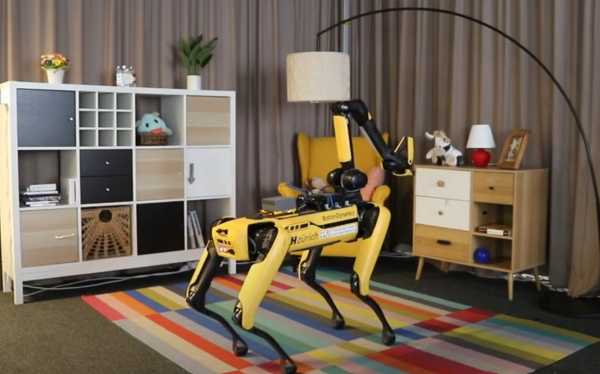 The
computational robotics lab develops theoretical foundations to shape the way future generations of robots are made, how they operate in complex environments, and how they interact with us. In this quest, we define Computational Robotics as the fusion of simulation, algorithms and data. In brief, we formalize advanced simulation models to provide robots with an innate understanding of the laws of physics.
The
computational robotics lab develops theoretical foundations to shape the way future generations of robots are made, how they operate in complex environments, and how they interact with us. In this quest, we define Computational Robotics as the fusion of simulation, algorithms and data. In brief, we formalize advanced simulation models to provide robots with an innate understanding of the laws of physics.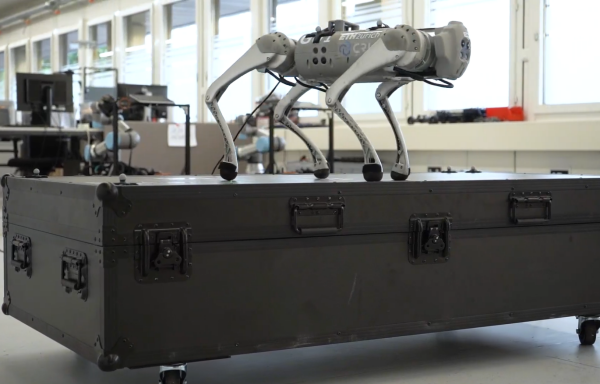 In space exploration, robots can go where humans yet can’t. Our focus lies on legged and structure-based locomotion to enable the traversal of difficult terrain, where conventional rovers fall short. We present our activities related to multi-robot exploration, multi-modal locomotion and operation in low-gravity environments.
In space exploration, robots can go where humans yet can’t. Our focus lies on legged and structure-based locomotion to enable the traversal of difficult terrain, where conventional rovers fall short. We present our activities related to multi-robot exploration, multi-modal locomotion and operation in low-gravity environments.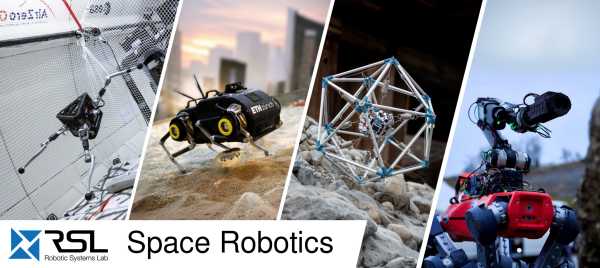 AITHON Robotics makes hazardous and costly inspections obsolete by using UAVs capable of performing precise and high force-intensive tasks. This allows to perform any needed inspection and maintenance tasks in hard-to-reach places, no scaffolding, cranes, or road closures needed.
AITHON Robotics makes hazardous and costly inspections obsolete by using UAVs capable of performing precise and high force-intensive tasks. This allows to perform any needed inspection and maintenance tasks in hard-to-reach places, no scaffolding, cranes, or road closures needed.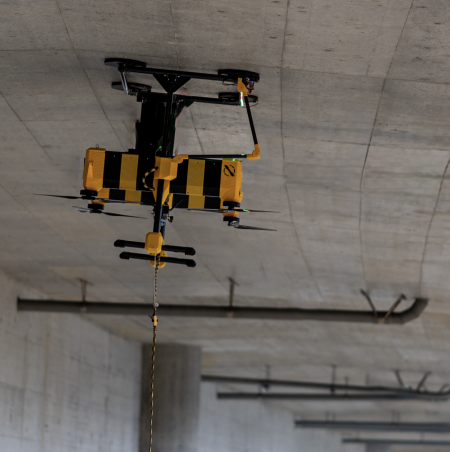 Environmental Robotics Lab: Taking inspiration from nature, we study novel design, manufacturing, perception, and control paradigms to create versatile and robust machines that can explore complex and unpredictable natural environments.
Environmental Robotics Lab: Taking inspiration from nature, we study novel design, manufacturing, perception, and control paradigms to create versatile and robust machines that can explore complex and unpredictable natural environments.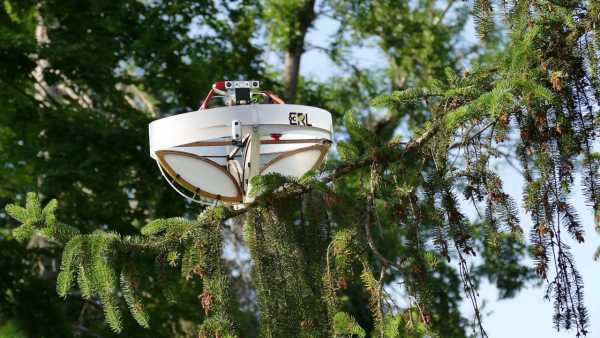 Witty Machines builds AI-case packing solutions for the food industry. Our robots automate repetitive tasks while increasing traceability and resilience in a sector critical to our society.
Witty Machines builds AI-case packing solutions for the food industry. Our robots automate repetitive tasks while increasing traceability and resilience in a sector critical to our society.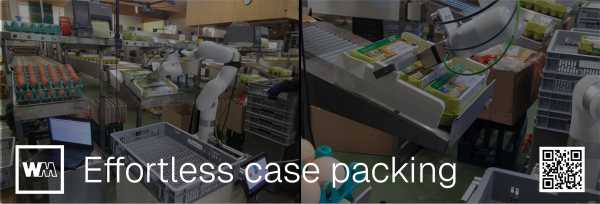 CyberRunner is an autonomous system based on the popular labyrinth board game. It learns through experience and is able to beat the best human players.
CyberRunner is an autonomous system based on the popular labyrinth board game. It learns through experience and is able to beat the best human players.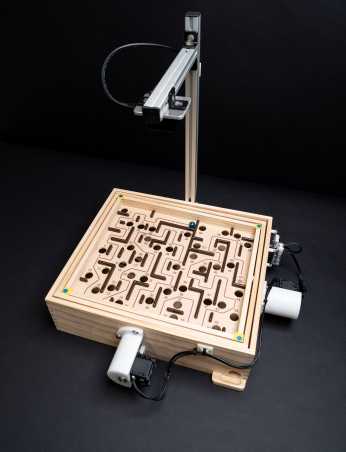 Mimic builds Physical AI to scale your most tedious tasks from manufacturing to logistics. Our robots intuitively learn new skills from you and operate autonomously in any environment.
Mimic builds Physical AI to scale your most tedious tasks from manufacturing to logistics. Our robots intuitively learn new skills from you and operate autonomously in any environment. We are the Mobile Robotics Lab - a new lab that has just moved to ETH - and our main research interests lie in the intersection of real-world robotics and Spatial AI. Come to our booth to see an interactive demo showcasing how robots perceive and understand their surrounding. We will also showcase other research projects about robot motion planning, exploration, photorealistic rendering and the next generation of sensing capabilities; So if you are interested, feel free to stop by!
We are the Mobile Robotics Lab - a new lab that has just moved to ETH - and our main research interests lie in the intersection of real-world robotics and Spatial AI. Come to our booth to see an interactive demo showcasing how robots perceive and understand their surrounding. We will also showcase other research projects about robot motion planning, exploration, photorealistic rendering and the next generation of sensing capabilities; So if you are interested, feel free to stop by!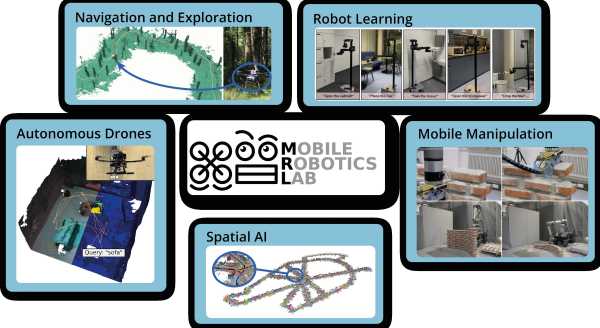 Discover the Advanced Manufacturing Lab (AMLZ), where we're pioneering the future of Robotics for Advanced Manufacturing. Our booth showcases the innovative research and solutions developed in our lab, featuring the ASIRA robot from our latest focus project as a prime example of our capabilities in action.
Discover the Advanced Manufacturing Lab (AMLZ), where we're pioneering the future of Robotics for Advanced Manufacturing. Our booth showcases the innovative research and solutions developed in our lab, featuring the ASIRA robot from our latest focus project as a prime example of our capabilities in action.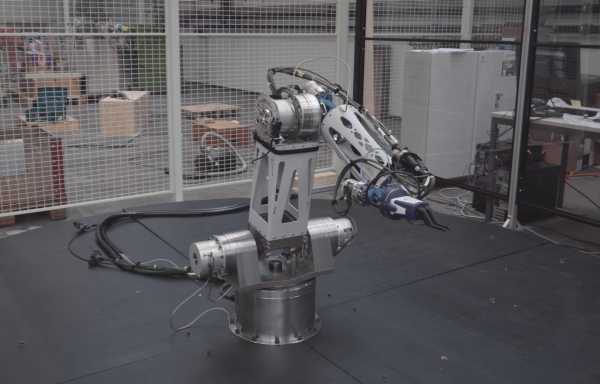 HASEL leg: we will demonstrate a bio-inspiredleg musculoskeletal leg driven by pairs of antagonistic electrohydraulic artificial muscles, allowing it to perform high-energy motions like jumping and fast movements while automatically adapting to obstacles and different terrains.
HASEL leg: we will demonstrate a bio-inspiredleg musculoskeletal leg driven by pairs of antagonistic electrohydraulic artificial muscles, allowing it to perform high-energy motions like jumping and fast movements while automatically adapting to obstacles and different terrains.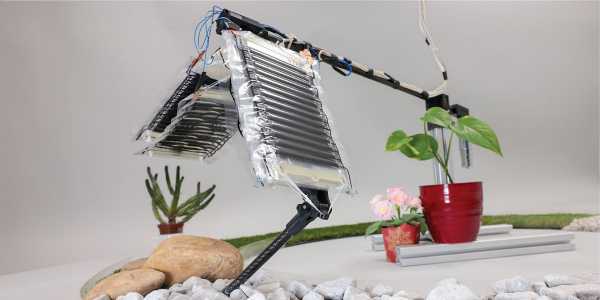 Robotic hand: We demonstrate fully autonomous grasping with the ORCA robotic hand. Trained via imitation learning, the hand converts visual input directly into motor commands. Extended, lengthy and continuous trials in varied environments highlight the system’s robustness.
Robotic hand: We demonstrate fully autonomous grasping with the ORCA robotic hand. Trained via imitation learning, the hand converts visual input directly into motor commands. Extended, lengthy and continuous trials in varied environments highlight the system’s robustness.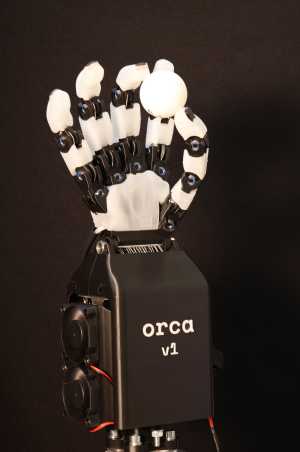 Robotic fish: we will demonstrate an autonomous underwater robot that mimics the movement of a fish and operates almost silently. It can record video, collect environmental samples, and filter water to capture eDNA fragments for identifying local species. Powered by a silicone fin that pumps water in cycles, the robot is ideal for use in sensitive ecosystems causing minimal disturbance.
Robotic fish: we will demonstrate an autonomous underwater robot that mimics the movement of a fish and operates almost silently. It can record video, collect environmental samples, and filter water to capture eDNA fragments for identifying local species. Powered by a silicone fin that pumps water in cycles, the robot is ideal for use in sensitive ecosystems causing minimal disturbance.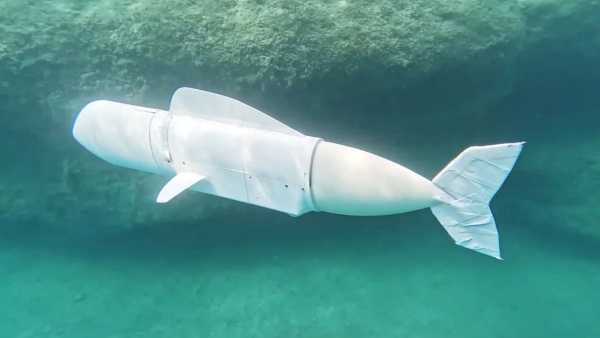 Way of Water is a research and art project that uses a swarm of aquatic robots to create synchronized light and water performances. Each compact vessel is equipped with LEDs and water jets, enabling choreographed motion on lakes and rivers. The project advances both hardware design and distributed control algorithms for autonomous coordination and control. Way of Water thus serves as both a platform for public engagement and a testbed for advancing multi-robot systems in challenging real-world environments.
Way of Water is a research and art project that uses a swarm of aquatic robots to create synchronized light and water performances. Each compact vessel is equipped with LEDs and water jets, enabling choreographed motion on lakes and rivers. The project advances both hardware design and distributed control algorithms for autonomous coordination and control. Way of Water thus serves as both a platform for public engagement and a testbed for advancing multi-robot systems in challenging real-world environments.

Wheels, Legs and Arms. The transformer robot can do it all: quadrupedal locomotion, bipedal locomotion, and dual-arm manipulation.
 Duatic AG builds human-scale robots that transform intralogistics operations. These robots navigate and handle objects like humans, ensuring rapid deployment and minimal upfront investment, seamlessly integrating into existing infrastructure. Powered by evolutionary actuators and cutting-edge robotic arm architecture, Duatic delivers unparalleled efficiency and reliability at affordable cost.
Duatic AG builds human-scale robots that transform intralogistics operations. These robots navigate and handle objects like humans, ensuring rapid deployment and minimal upfront investment, seamlessly integrating into existing infrastructure. Powered by evolutionary actuators and cutting-edge robotic arm architecture, Duatic delivers unparalleled efficiency and reliability at affordable cost. The
robotic revolution to
save disaster victims
and inspect confined spaces!
RoBoa goes where no other robots, drones, or humans can go!
The
robotic revolution to
save disaster victims
and inspect confined spaces!
RoBoa goes where no other robots, drones, or humans can go! Tethys Robotics is designing a compact, autonomous underwater drone tailored for inspections in turbid and challenging waters. Our innovative solution provides enhanced efficiency and flexibility for the offshore energy sector.
Tethys Robotics is designing a compact, autonomous underwater drone tailored for inspections in turbid and challenging waters. Our innovative solution provides enhanced efficiency and flexibility for the offshore energy sector. The
Autonomous
River
Cleanup focuses on developing a river waste monitoring network and an autonomous robotic sorting system to improve river waste recycling. The project aims to transfer and apply high-tech, such as robotics, automation, and artificial intelligence, to the field of environmental protection. As part of our project, we are developing and testing systems to show how such technologies can be used effectively against river waste.
The
Autonomous
River
Cleanup focuses on developing a river waste monitoring network and an autonomous robotic sorting system to improve river waste recycling. The project aims to transfer and apply high-tech, such as robotics, automation, and artificial intelligence, to the field of environmental protection. As part of our project, we are developing and testing systems to show how such technologies can be used effectively against river waste. Introducing
Tytan – a cutting-edge quadrupedal robot designed for high-performance tasks. Equipped with state-of-the-art actuators, it achieves speeds of up to 20 km/h and effortlessly carries loads up to 100kg. Ideal for applications demanding strength, agility, and reliability, Tytan is built to push boundaries and handle challenging real-world scenarios.
Introducing
Tytan – a cutting-edge quadrupedal robot designed for high-performance tasks. Equipped with state-of-the-art actuators, it achieves speeds of up to 20 km/h and effortlessly carries loads up to 100kg. Ideal for applications demanding strength, agility, and reliability, Tytan is built to push boundaries and handle challenging real-world scenarios. The goal of
Intelligent Control Systems group research is to make high performance control and estimation available for safety-critical systems that act in varying and uncertain environments. At the booth, we present our miniature race car platform that we use to test and validate control and estimation algorithms.
The goal of
Intelligent Control Systems group research is to make high performance control and estimation available for safety-critical systems that act in varying and uncertain environments. At the booth, we present our miniature race car platform that we use to test and validate control and estimation algorithms.  Maxon develops and manufactures high-performance robotic actuators and motion systems for autonomous mobile and industrial robots. We focus on high degrees of integration, scalability, and robust designs. Our deep vertical integration allows us to highly optimize all key subsystems, ranging from simulation models to motor windings and beyond.
Maxon develops and manufactures high-performance robotic actuators and motion systems for autonomous mobile and industrial robots. We focus on high degrees of integration, scalability, and robust designs. Our deep vertical integration allows us to highly optimize all key subsystems, ranging from simulation models to motor windings and beyond.  The
Perception and Navigation Team of the Robotic Systems Lab develops sensing systems and algorithms that enable robots to understand their surroundings and navigate autonomously through both unknown and partially known environments. Through this work, they enhance robots' ability to operate independently in complex real-world scenarios.
The
Perception and Navigation Team of the Robotic Systems Lab develops sensing systems and algorithms that enable robots to understand their surroundings and navigate autonomously through both unknown and partially known environments. Through this work, they enhance robots' ability to operate independently in complex real-world scenarios. RIVR is a Swiss robotics company pioneering Physical AI and robotic solutions to revolutionize last-mile delivery, giving 1 human the power of 1000. Through the combination of artificial neural networks and innovative robot designs with wheels and legs, RIVR aims to enhance efficiency, sustainability, and scalability in last-mile delivery. Founded as Swiss-Mile, the company rebranded to RIVR in 2025 to better reflect its mission of driving the future of intelligent robotics.
RIVR is a Swiss robotics company pioneering Physical AI and robotic solutions to revolutionize last-mile delivery, giving 1 human the power of 1000. Through the combination of artificial neural networks and innovative robot designs with wheels and legs, RIVR aims to enhance efficiency, sustainability, and scalability in last-mile delivery. Founded as Swiss-Mile, the company rebranded to RIVR in 2025 to better reflect its mission of driving the future of intelligent robotics. Heavy Machinery @ RSL: Our research group is dedicated to revolutionizing the automation of heavy equipment for construction applications by deploying autonomous systems leveraging advanced AI. Our mission is to enhance the capabilities of construction machinery, enabling it to perform tasks such as landscaping, object manipulation, forestry operations, and earth moving with precision and efficiency in rugged environments.
Heavy Machinery @ RSL: Our research group is dedicated to revolutionizing the automation of heavy equipment for construction applications by deploying autonomous systems leveraging advanced AI. Our mission is to enhance the capabilities of construction machinery, enabling it to perform tasks such as landscaping, object manipulation, forestry operations, and earth moving with precision and efficiency in rugged environments. magnecko is a magnetic quadrupedal climbing robot which aims to navigate complex three-dimensional structures to perform inspection tasks.
magnecko is a magnetic quadrupedal climbing robot which aims to navigate complex three-dimensional structures to perform inspection tasks. LAYERED provides robotic solutions for automated, high-quality coating directly at construction sites. Our autonomous robots help construction companies tackle labor shortages, reduce material waste, and accelerate the shift towards sustainable construction practices.
LAYERED provides robotic solutions for automated, high-quality coating directly at construction sites. Our autonomous robots help construction companies tackle labor shortages, reduce material waste, and accelerate the shift towards sustainable construction practices. NomadZ: we are a student team from ETH Zürich competing in the RoboCup Standard Platform League, where fully autonomous NAO robots play soccer. Our mission is to develop an advanced software framework to make our robots play competitively.
NomadZ: we are a student team from ETH Zürich competing in the RoboCup Standard Platform League, where fully autonomous NAO robots play soccer. Our mission is to develop an advanced software framework to make our robots play competitively. Accurate object throwing poses a challenge for robots due to gripper release uncertainties and the precision demands of robotic control. At RSL, we explored training robots to perform effective whole-body maneuvers using reinforcement learning. In this demo, our
legged manipulator robot,
ALMA, will showcase its ability to throw balls toward a target with its best effort.
Accurate object throwing poses a challenge for robots due to gripper release uncertainties and the precision demands of robotic control. At RSL, we explored training robots to perform effective whole-body maneuvers using reinforcement learning. In this demo, our
legged manipulator robot,
ALMA, will showcase its ability to throw balls toward a target with its best effort. The
Robotics and AI Institute aims to solve the most important and fundamental problems in robotics and AI. Come to our booth to see some of the institute's robots in action.
The
Robotics and AI Institute aims to solve the most important and fundamental problems in robotics and AI. Come to our booth to see some of the institute's robots in action. Our project focuses on
3D scene understanding for robotics using
Scene Graphs, enabling a structured and hierarchical perception of the environment. Beyond passive observation, our framework allows robots to interact with objects, refining their understanding through real-world engagement. This approach enhances autonomous decision-making, benefiting applications like robotic assistance, navigation, and industrial automation.
Our project focuses on
3D scene understanding for robotics using
Scene Graphs, enabling a structured and hierarchical perception of the environment. Beyond passive observation, our framework allows robots to interact with objects, refining their understanding through real-world engagement. This approach enhances autonomous decision-making, benefiting applications like robotic assistance, navigation, and industrial automation. The
computational robotics lab develops theoretical foundations to shape the way future generations of robots are made, how they operate in complex environments, and how they interact with us. In this quest, we define Computational Robotics as the fusion of simulation, algorithms and data. In brief, we formalize advanced simulation models to provide robots with an innate understanding of the laws of physics.
The
computational robotics lab develops theoretical foundations to shape the way future generations of robots are made, how they operate in complex environments, and how they interact with us. In this quest, we define Computational Robotics as the fusion of simulation, algorithms and data. In brief, we formalize advanced simulation models to provide robots with an innate understanding of the laws of physics. In space exploration, robots can go where humans yet can’t. Our focus lies on legged and structure-based locomotion to enable the traversal of difficult terrain, where conventional rovers fall short. We present our activities related to multi-robot exploration, multi-modal locomotion and operation in low-gravity environments.
In space exploration, robots can go where humans yet can’t. Our focus lies on legged and structure-based locomotion to enable the traversal of difficult terrain, where conventional rovers fall short. We present our activities related to multi-robot exploration, multi-modal locomotion and operation in low-gravity environments. AITHON Robotics makes hazardous and costly inspections obsolete by using UAVs capable of performing precise and high force-intensive tasks. This allows to perform any needed inspection and maintenance tasks in hard-to-reach places, no scaffolding, cranes, or road closures needed.
AITHON Robotics makes hazardous and costly inspections obsolete by using UAVs capable of performing precise and high force-intensive tasks. This allows to perform any needed inspection and maintenance tasks in hard-to-reach places, no scaffolding, cranes, or road closures needed. Environmental Robotics Lab: Taking inspiration from nature, we study novel design, manufacturing, perception, and control paradigms to create versatile and robust machines that can explore complex and unpredictable natural environments.
Environmental Robotics Lab: Taking inspiration from nature, we study novel design, manufacturing, perception, and control paradigms to create versatile and robust machines that can explore complex and unpredictable natural environments. Witty Machines builds AI-case packing solutions for the food industry. Our robots automate repetitive tasks while increasing traceability and resilience in a sector critical to our society.
Witty Machines builds AI-case packing solutions for the food industry. Our robots automate repetitive tasks while increasing traceability and resilience in a sector critical to our society. CyberRunner is an autonomous system based on the popular labyrinth board game. It learns through experience and is able to beat the best human players.
CyberRunner is an autonomous system based on the popular labyrinth board game. It learns through experience and is able to beat the best human players. Mimic builds Physical AI to scale your most tedious tasks from manufacturing to logistics. Our robots intuitively learn new skills from you and operate autonomously in any environment.
Mimic builds Physical AI to scale your most tedious tasks from manufacturing to logistics. Our robots intuitively learn new skills from you and operate autonomously in any environment. We are the Mobile Robotics Lab - a new lab that has just moved to ETH - and our main research interests lie in the intersection of real-world robotics and Spatial AI. Come to our booth to see an interactive demo showcasing how robots perceive and understand their surrounding. We will also showcase other research projects about robot motion planning, exploration, photorealistic rendering and the next generation of sensing capabilities; So if you are interested, feel free to stop by!
We are the Mobile Robotics Lab - a new lab that has just moved to ETH - and our main research interests lie in the intersection of real-world robotics and Spatial AI. Come to our booth to see an interactive demo showcasing how robots perceive and understand their surrounding. We will also showcase other research projects about robot motion planning, exploration, photorealistic rendering and the next generation of sensing capabilities; So if you are interested, feel free to stop by! Discover the Advanced Manufacturing Lab (AMLZ), where we're pioneering the future of Robotics for Advanced Manufacturing. Our booth showcases the innovative research and solutions developed in our lab, featuring the ASIRA robot from our latest focus project as a prime example of our capabilities in action.
Discover the Advanced Manufacturing Lab (AMLZ), where we're pioneering the future of Robotics for Advanced Manufacturing. Our booth showcases the innovative research and solutions developed in our lab, featuring the ASIRA robot from our latest focus project as a prime example of our capabilities in action. HASEL leg: we will demonstrate a bio-inspiredleg musculoskeletal leg driven by pairs of antagonistic electrohydraulic artificial muscles, allowing it to perform high-energy motions like jumping and fast movements while automatically adapting to obstacles and different terrains.
HASEL leg: we will demonstrate a bio-inspiredleg musculoskeletal leg driven by pairs of antagonistic electrohydraulic artificial muscles, allowing it to perform high-energy motions like jumping and fast movements while automatically adapting to obstacles and different terrains. Robotic hand: We demonstrate fully autonomous grasping with the ORCA robotic hand. Trained via imitation learning, the hand converts visual input directly into motor commands. Extended, lengthy and continuous trials in varied environments highlight the system’s robustness.
Robotic hand: We demonstrate fully autonomous grasping with the ORCA robotic hand. Trained via imitation learning, the hand converts visual input directly into motor commands. Extended, lengthy and continuous trials in varied environments highlight the system’s robustness. Robotic fish: we will demonstrate an autonomous underwater robot that mimics the movement of a fish and operates almost silently. It can record video, collect environmental samples, and filter water to capture eDNA fragments for identifying local species. Powered by a silicone fin that pumps water in cycles, the robot is ideal for use in sensitive ecosystems causing minimal disturbance.
Robotic fish: we will demonstrate an autonomous underwater robot that mimics the movement of a fish and operates almost silently. It can record video, collect environmental samples, and filter water to capture eDNA fragments for identifying local species. Powered by a silicone fin that pumps water in cycles, the robot is ideal for use in sensitive ecosystems causing minimal disturbance. Way of Water is a research and art project that uses a swarm of aquatic robots to create synchronized light and water performances. Each compact vessel is equipped with LEDs and water jets, enabling choreographed motion on lakes and rivers. The project advances both hardware design and distributed control algorithms for autonomous coordination and control. Way of Water thus serves as both a platform for public engagement and a testbed for advancing multi-robot systems in challenging real-world environments.
Way of Water is a research and art project that uses a swarm of aquatic robots to create synchronized light and water performances. Each compact vessel is equipped with LEDs and water jets, enabling choreographed motion on lakes and rivers. The project advances both hardware design and distributed control algorithms for autonomous coordination and control. Way of Water thus serves as both a platform for public engagement and a testbed for advancing multi-robot systems in challenging real-world environments.
Flexion Robotics is building the future of humanoid intelligence by developing the next-generation software that empowers humanoid robots to perform complex,
real-world tasks. They apply large-scale AI training in simulation and cutting-edge perception models that transfer skills from the virtual world to reality. The vision is bold: to become a global leader in the humanoid market and to train humanoid robots that are ready to work.
Flexion Robotics was co-founded by Nikita Rudin, David Hoeller, Julian Nubert, Fabian Tischhauser and Prof. Marco Hutter all former or current members from ETH Zurich’s Robotic Systems Lab.
